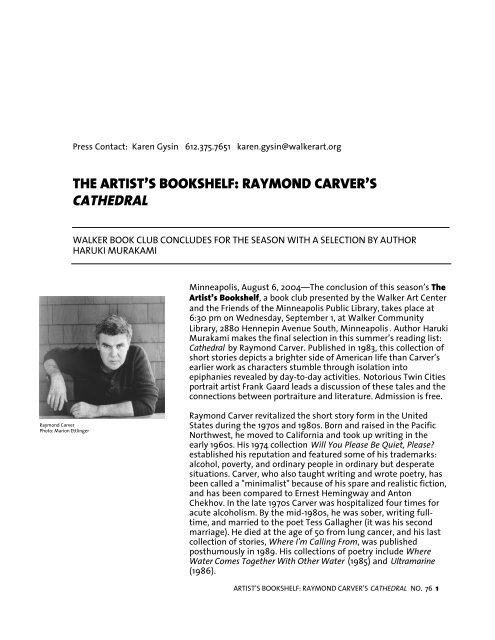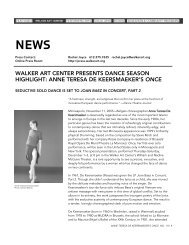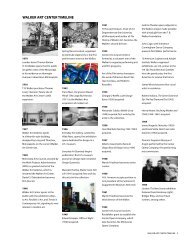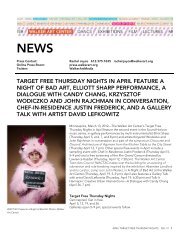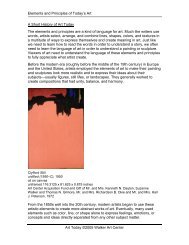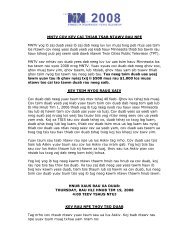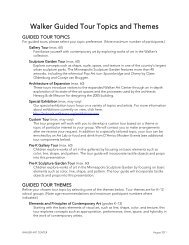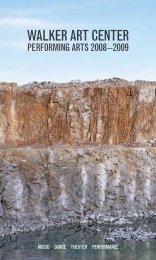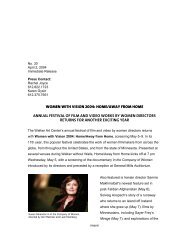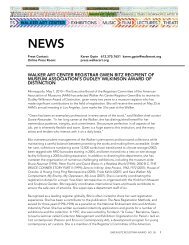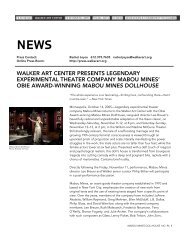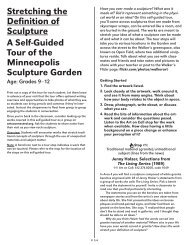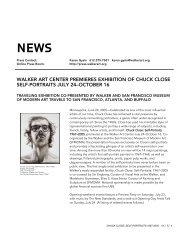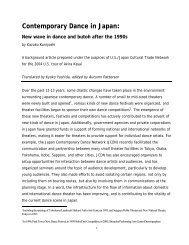the artist's bookshelf: raymond carver's cathedral - Walker Art Center
the artist's bookshelf: raymond carver's cathedral - Walker Art Center
the artist's bookshelf: raymond carver's cathedral - Walker Art Center
You also want an ePaper? Increase the reach of your titles
YUMPU automatically turns print PDFs into web optimized ePapers that Google loves.
Raymond Carver<br />
Photo: Marion Ettlinger<br />
Press Contact: Karen Gysin 612.375.7651 karen.gysin@walkerart.org<br />
THE ARTIST’S BOOKSHELF: RAYMOND CARVER’S<br />
CATHEDRAL<br />
WALKER BOOK CLUB CONCLUDES FOR THE SEASON WITH A SELECTION BY AUTHOR<br />
HARUKI MURAKAMI<br />
Minneapolis, August 6, 2004—The conclusion of this season’s The<br />
<strong>Art</strong>ist’s Bookshelf, a book club presented by <strong>the</strong> <strong>Walker</strong> <strong>Art</strong> <strong>Center</strong><br />
and <strong>the</strong> Friends of <strong>the</strong> Minneapolis Public Library, takes place at<br />
6:30 pm on Wednesday, September 1, at <strong>Walker</strong> Community<br />
Library, 2880 Hennepin Avenue South, Minneapolis. Author Haruki<br />
Murakami makes <strong>the</strong> final selection in this summer’s reading list:<br />
Ca<strong>the</strong>dral by Raymond Carver. Published in 1983, this collection of<br />
short stories depicts a brighter side of American life than Carver’s<br />
earlier work as characters stumble through isolation into<br />
epiphanies revealed by day-to-day activities. Notorious Twin Cities<br />
portrait artist Frank Gaard leads a discussion of <strong>the</strong>se tales and <strong>the</strong><br />
connections between portraiture and literature. Admission is free.<br />
Raymond Carver revitalized <strong>the</strong> short story form in <strong>the</strong> United<br />
States during <strong>the</strong> 1970s and 1980s. Born and raised in <strong>the</strong> Pacific<br />
Northwest, he moved to California and took up writing in <strong>the</strong><br />
early 1960s. His 1974 collection Will You Please Be Quiet, Please?<br />
established his reputation and featured some of his trademarks:<br />
alcohol, poverty, and ordinary people in ordinary but desperate<br />
situations. Carver, who also taught writing and wrote poetry, has<br />
been called a "minimalist" because of his spare and realistic fiction,<br />
and has been compared to Ernest Hemingway and Anton<br />
Chekhov. In <strong>the</strong> late 1970s Carver was hospitalized four times for<br />
acute alcoholism. By <strong>the</strong> mid-1980s, he was sober, writing fulltime,<br />
and married to <strong>the</strong> poet Tess Gallagher (it was his second<br />
marriage). He died at <strong>the</strong> age of 50 from lung cancer, and his last<br />
collection of stories, Where I'm Calling From, was published<br />
posthumously in 1989. His collections of poetry include Where<br />
Water Comes Toge<strong>the</strong>r With O<strong>the</strong>r Water (1985) and Ultramarine<br />
(1986).<br />
ARTIST’S BOOKSHELF: RAYMOND CARVER’S CATHEDRAL NO. 76 1
Frank Gaard<br />
Photo: Cameron Wittig for <strong>Walker</strong> <strong>Art</strong> <strong>Center</strong><br />
Haruki Murakami, whose books The Wind-Up Bird Chronicle and<br />
After <strong>the</strong> Quake were selected for <strong>the</strong> two previous installments of<br />
The <strong>Art</strong>ist’s Bookshelf, is widely regarded as <strong>the</strong> most influential<br />
Japanese writer of his generation. The son of a literature teacher,<br />
Murakami learned English in school and grew up with American<br />
fiction. His first novel was published in 1970. He graduated from<br />
Waseda University in 1973, with a degree in drama, after which he<br />
managed a jazz and coffee shop. With <strong>the</strong> publication of his novel<br />
Norwegian Wood, Murakami became a cult phenomenon in Japan.<br />
He has lived all over <strong>the</strong> world, including Rome, A<strong>the</strong>ns, and a<br />
Greek island, as well as spending four years at Princeton as a<br />
visiting fellow, where he wrote The Wind-Up Bird Chronicle.<br />
Murakami's books are set in Japan, but <strong>the</strong>y are infused with <strong>the</strong><br />
urban, eclectic, Western culture he has absorbed all his life.<br />
Frank Gaard was born and raised in Chicago. He moved to<br />
Minneapolis in 1969 and was a professor of fine arts at <strong>the</strong><br />
Minneapolis College of <strong>Art</strong> and Design from 1969 until 1987. He<br />
was <strong>the</strong> creator and publisher of <strong>the</strong> legendary underground ’zine<br />
<strong>Art</strong>police (1974–1994), in which he blended cutting social criticism<br />
with a brutish drawing style often compared to that of comic<br />
artist R. Crumb. An information addict with a diagnostician’s<br />
exactitude for <strong>the</strong> pulses of politics and culture, Gaard draws from<br />
sources as varied as <strong>the</strong> entertainment industry, art history, and<br />
popular media, collapsing <strong>the</strong>m into a fascinating jumble that<br />
exposes <strong>the</strong> dysfunctional ills of <strong>the</strong> world in which we live. Since<br />
<strong>the</strong> mid-1980s, he mainly has been creating portraits of family<br />
members, artist friends, and fictional characters. The <strong>Walker</strong><br />
presented <strong>the</strong> Viewpoints exhibition Frank Gaard: Painting in 1980,<br />
and has several works by <strong>the</strong> artist in its permanent collection.<br />
Gaard’s billboard design Billboard Spectacle (In Memory of Guy<br />
Debord), part of <strong>the</strong> <strong>Walker</strong>’s ongoing Billboard Project, was on<br />
display in downtown Minneapolis May 15-July 14.<br />
For discussion questions and an online forum on <strong>the</strong> book, visit<br />
www.walkerart.org.<br />
The <strong>Art</strong>ist’s Bookshelf is presented in partnership with <strong>the</strong> Friends<br />
of <strong>the</strong> Minneapolis Public Library.<br />
<strong>Walker</strong> without Walls is made possible by generous support from<br />
Target.<br />
The <strong>Walker</strong> <strong>Art</strong> <strong>Center</strong> is located at 725 Vineland Place, at Lyndale<br />
Avenue South, Minneapolis, one block off Highway I-94.<br />
For public information, call 612.375.7622, or visit:<br />
http://www.walkerart.org<br />
ARTIST’S BOOKSHELF: RAYMOND CARVER’S CATHEDRAL NO. 76 2


